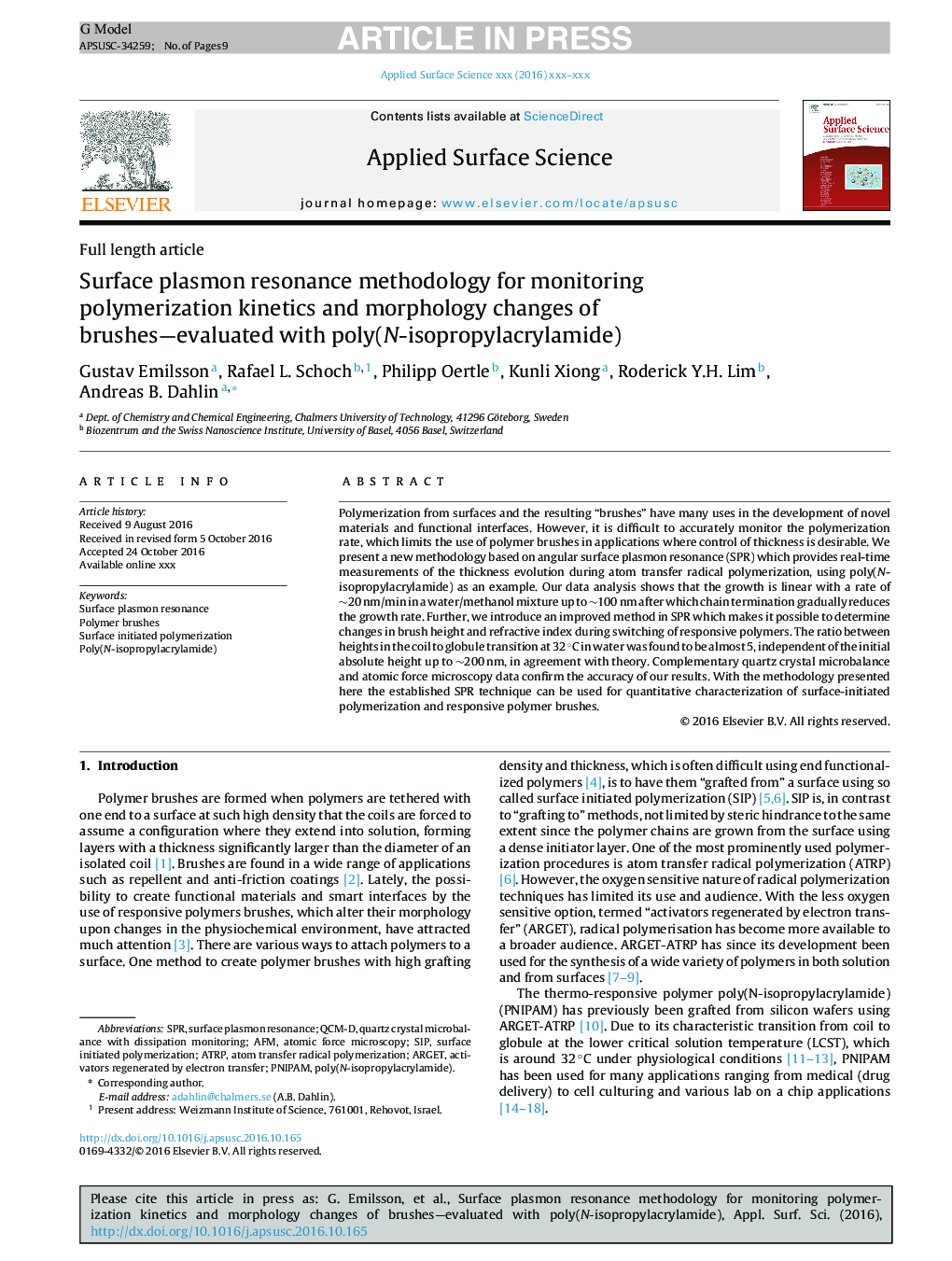| Article ID | Journal | Published Year | Pages | File Type |
|---|---|---|---|---|
| 5352718 | Applied Surface Science | 2017 | 9 Pages |
Abstract
Polymerization from surfaces and the resulting “brushes” have many uses in the development of novel materials and functional interfaces. However, it is difficult to accurately monitor the polymerization rate, which limits the use of polymer brushes in applications where control of thickness is desirable. We present a new methodology based on angular surface plasmon resonance (SPR) which provides real-time measurements of the thickness evolution during atom transfer radical polymerization, using poly(N-isopropylacrylamide) as an example. Our data analysis shows that the growth is linear with a rate of â¼20 nm/min in a water/methanol mixture up to â¼100 nm after which chain termination gradually reduces the growth rate. Further, we introduce an improved method in SPR which makes it possible to determine changes in brush height and refractive index during switching of responsive polymers. The ratio between heights in the coil to globule transition at 32 °C in water was found to be almost 5, independent of the initial absolute height up to â¼200 nm, in agreement with theory. Complementary quartz crystal microbalance and atomic force microscopy data confirm the accuracy of our results. With the methodology presented here the established SPR technique can be used for quantitative characterization of surface-initiated polymerization and responsive polymer brushes.
Keywords
Related Topics
Physical Sciences and Engineering
Chemistry
Physical and Theoretical Chemistry
Authors
Gustav Emilsson, Rafael L. Schoch, Philipp Oertle, Kunli Xiong, Roderick Y.H. Lim, Andreas B. Dahlin,
